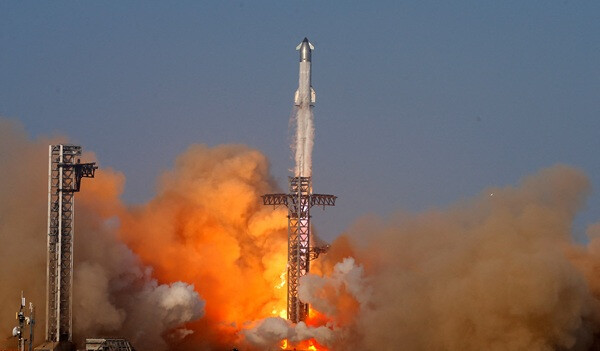
BOCA CHICA, TEXAS – SpaceX's ambitious Starship program, central to Elon Musk's vision of colonizing Mars and establishing a lunar presence, encountered another significant hurdle on Wednesday night as a Starship prototype, Ship 36, exploded during a static fire test at the company's Starbase facility in Boca Chica, Texas. The incident, which occurred around 11:00 p.m. CT, resulted in a massive fireball and considerable damage to the test site, though no injuries were reported.
Fiery Catastrophe on the Test Stand
The explosion of Starship 36, which was undergoing preparations for its tenth flight test, sent a towering pillar of fire and smoke into the night sky, visible for miles and rattling homes in surrounding communities. Videos circulated online, including on NASA's YouTube channel and NASASpaceflight's streams, captured the dramatic event, showing smoke billowing around the booster before a blinding flash and a thunderous roar engulfed the vehicle in flames. Debris was scattered across the Massey's test site, where the incident took place.
SpaceX promptly issued a statement on its X (formerly Twitter) platform, confirming that Starship had experienced a "major anomaly" during the test. The company emphasized that safety protocols were maintained, and all personnel were accounted for and safe. Local authorities, including Cameron County officials, also confirmed no immediate injuries. SpaceX is now working with local officials to secure the test site and the immediate surrounding areas, advising the public to avoid approaching the location until recovery operations are complete.
A String of Unforeseen Events
This latest explosion adds to a challenging year for the Starship program, which has seen a series of test failures. The static fire test, a critical step where the rocket's engines are ignited while the vehicle remains anchored to the ground to simulate launch conditions, was intended to validate the readiness of Starship 36 for its upcoming flight. Earlier this month, the Super Heavy Booster for this mission (Booster 16) successfully completed its full-duration static fire test on June 6, and Ship 36 itself had performed a single-engine static fire on June 16.
The previous ninth test flight in May ended with Starship 35 disintegrating over the Indian Ocean after experiencing a fuel leak and loss of attitude control during its orbital coast phase. While the Super Heavy booster for that mission performed well, its planned splashdown in the Gulf of Mexico resulted in a "rapid unscheduled disassembly." Prior to that, the seventh and eighth test flights in January and March, respectively, both saw the Starship upper stage explode minutes into their ascent, before reaching orbital velocity. The Flight 7 failure was traced to a propellant leak and fire in the spacecraft's "attic," while Flight 8 was attributed to a "flash" in one of its Raptor engines, leading to inadvertent propellant mixing and ignition.
Despite these setbacks, SpaceX maintains that such "rapid unscheduled disassemblies" are an inherent part of their iterative development process, allowing engineers to gather critical data and implement design changes swiftly. Elon Musk, CEO of SpaceX, even quipped "Just a scratch" in an early morning post on X following the explosion, reflecting the company's philosophy of learning from failures as they push the boundaries of space technology.
Implications for Future Missions
The Starship system, designed to be the world's most powerful and fully reusable launch vehicle, is crucial for NASA's Artemis program to return humans to the Moon and for Musk's long-term goal of establishing a self-sustaining city on Mars. Each test failure, while providing valuable data, inevitably delays the ambitious timeline for these missions. The Federal Aviation Administration (FAA) requires SpaceX to conduct thorough mishap investigations after each incident, which can lead to further launch delays.
The latest explosion raises questions about the immediate future of the tenth Starship flight test, which had been tentatively targeting a June 29 launch window according to FAA advisories. The extent of the damage to the test stand and infrastructure at Starbase will determine the duration of the recovery and repair efforts before further tests can resume. As SpaceX continues to push the boundaries of rocket technology, the world watches closely to see how they will overcome these persistent challenges on their path to interplanetary travel.
[Copyright (c) Global Economic Times. All Rights Reserved.]




























